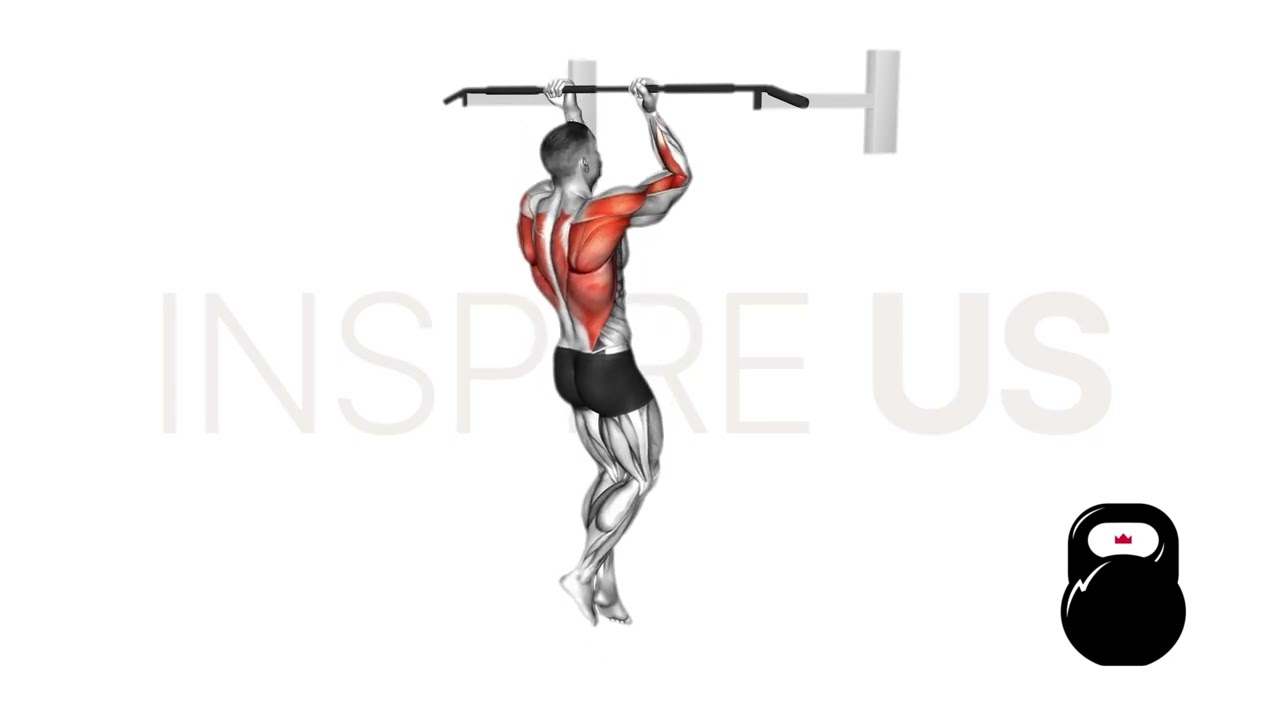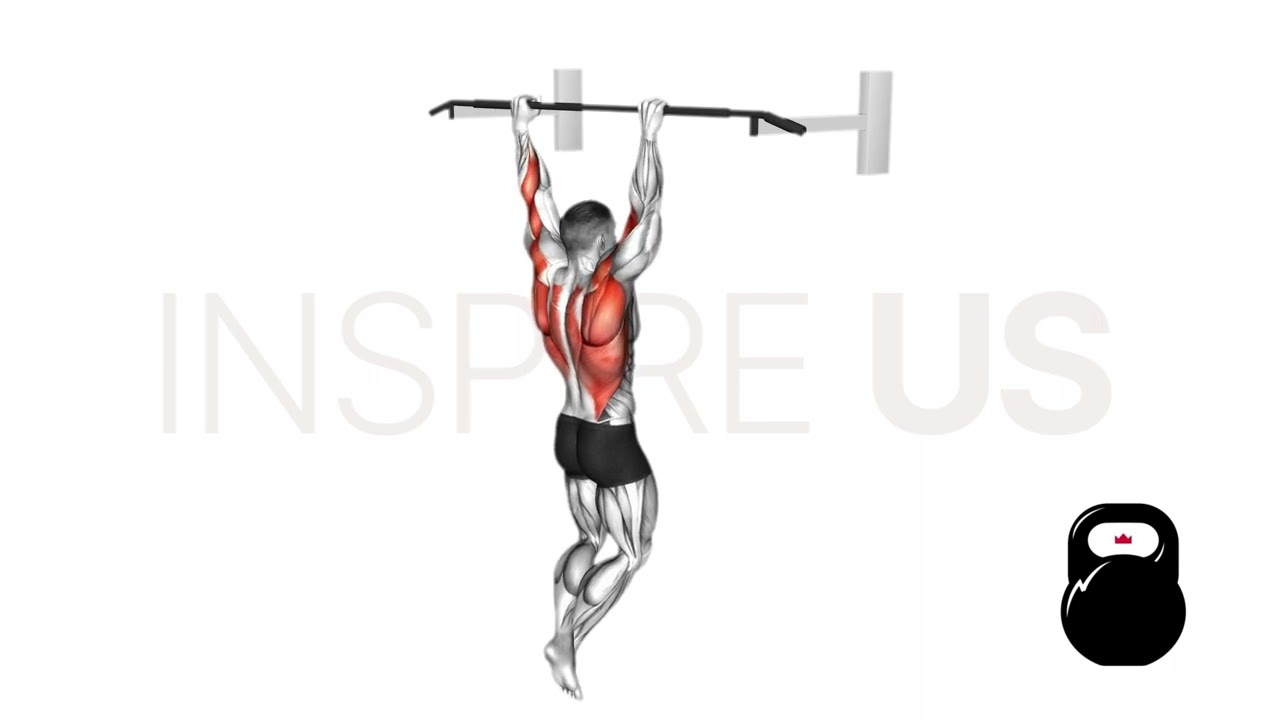Calisthenics Exercise List: The Most Popular Options
Whether your plan is to get fit at home or you just prefer the art of performing bodyweight exercise - there are quite literally dozens of calisthenic exercises to choose from.
In this list, we’ve compiled the most common baseline calisthenic exercises seen in the majority of bodyweight training programs, and explained how best to use them for reaching your training goals.
The majority of calisthenic exercises are simply variations of the squat, pull-up, inverted row, planche, dip or push-up.
Other accessory movements like planks are also performed to create a more balanced and comprehensive workout, and are seen as complementary to the aforementioned calisthenic compound exercises.
What are Calisthenic Exercises?
The term “calisthenics” refers to a form of resistance training that utilizes the exerciser’s own body as a source of resistance. Typically, calisthenic exercises do not feature a source of external resistance, unlike with free weights or machine-based exercises where the muscles are taxed by weight from another object.
Calisthenics are preferred by many due to their comparatively low risk of injury, low barrier of entry and the fact that they do not require much equipment to perform.
Common Calisthenic Exercises
1. Pull-Ups and Chin-Ups
Perhaps one of the most iconic examples of calisthenic training are the pull-up and the chin-up - two multi-joint compound exercises meant to train the muscles of the back and biceps.
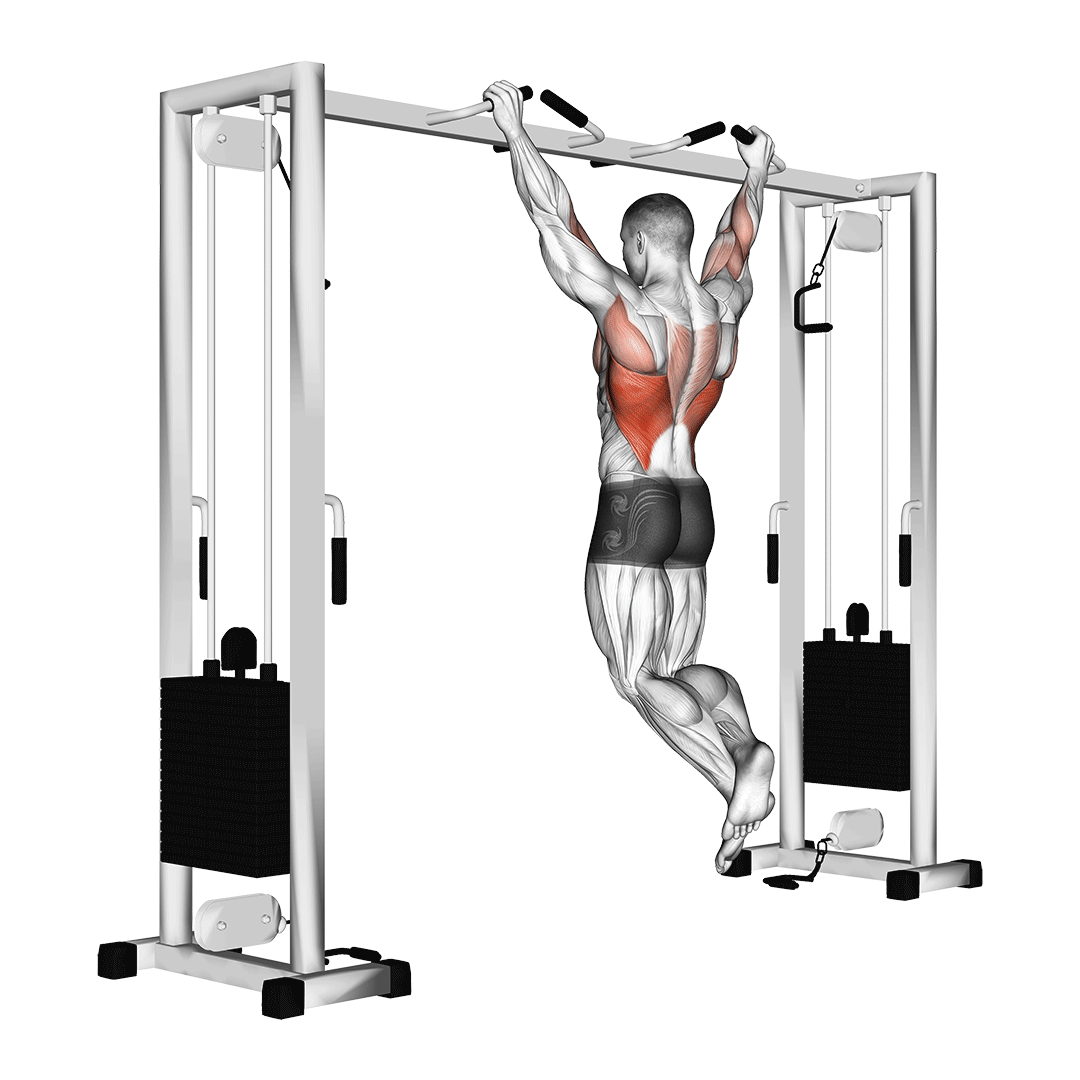
Novice calisthenic athletes will often get the two confused due to their similarity in performance, but may be differentiated by the fact that the pull-up utilizes an overhand or pronated grip, whereas the chin-up features an underhand or supinated grip.

Naturally, this change in grip has wide-reaching effects across the entire kinetic chain, and as such it is the chin-up that is preferred by lifters who wish to focus more on the biceps, whereas the pull-up is used for greater emphasis on the muscles of the back.
Benefits and Purpose as a Calisthenics Exercise
Both chin-ups and pull-ups often serve as the main compound exercise in many calisthenics back workouts, and are often used interchangeably depending on the desired muscular emphasis of the athlete.
Either vertical pulling movement is highly effective at building up grip strength, upper body pulling strength and allowing further specification into exercises like the front lever or muscle up - two highly advanced calisthenic movements.
Muscles Worked by Push Ups and Pull Ups
Pull-ups and chin-ups work the muscles of the biceps, the latissimus dorsi, the posterior deltoid head, the rhomboids, the infraspinatus, the teres muscles and the trapezius.
As was mentioned previously, pull-ups place greater emphasis on muscles other than the biceps, but will nonetheless still recruit it to a certain extent.
Chin-ups are the opposite, and shift focus towards the biceps, somewhat reducing recruitment of the back muscles.
Variations
Unlike most other calisthenic exercises, the chin-up and pull-up feature only a few variations.
The most notable of such are the neutral grip pull-up, eccentric variations of both chin-ups and pull-ups, archer pull-ups, and variations that alter the distance between the hands.
How-to: Chin-Ups
To perform a chin-up:
Hanging from a pull-up bar with the palms set shoulder-width apart and facing inwards, the exerciser will bend at the elbows and pull themselves upwards, contracting the core to prevent their torso from swinging.
Once the head is over the bar, the exerciser will simply reverse the motion and lower themselves back to the original position, thereby completing the repetition.
How-to: Pull-Ups
To perform a pull-up:
Gripping a pull-up bar in an overhand grip wider than shoulder-width apart, the exerciser will pull their chest towards the bar as they simultaneously draw the elbows backwards, elevating their head over the bar.
From this point, the exerciser will simply lower themselves in a slow and controlled manner, thereby completing the repetition.
2. Push-Ups
The push-up is a classic example of calisthenic exercise, as it requires no equipment whatsoever and is generally accessible to individuals of all kinds.
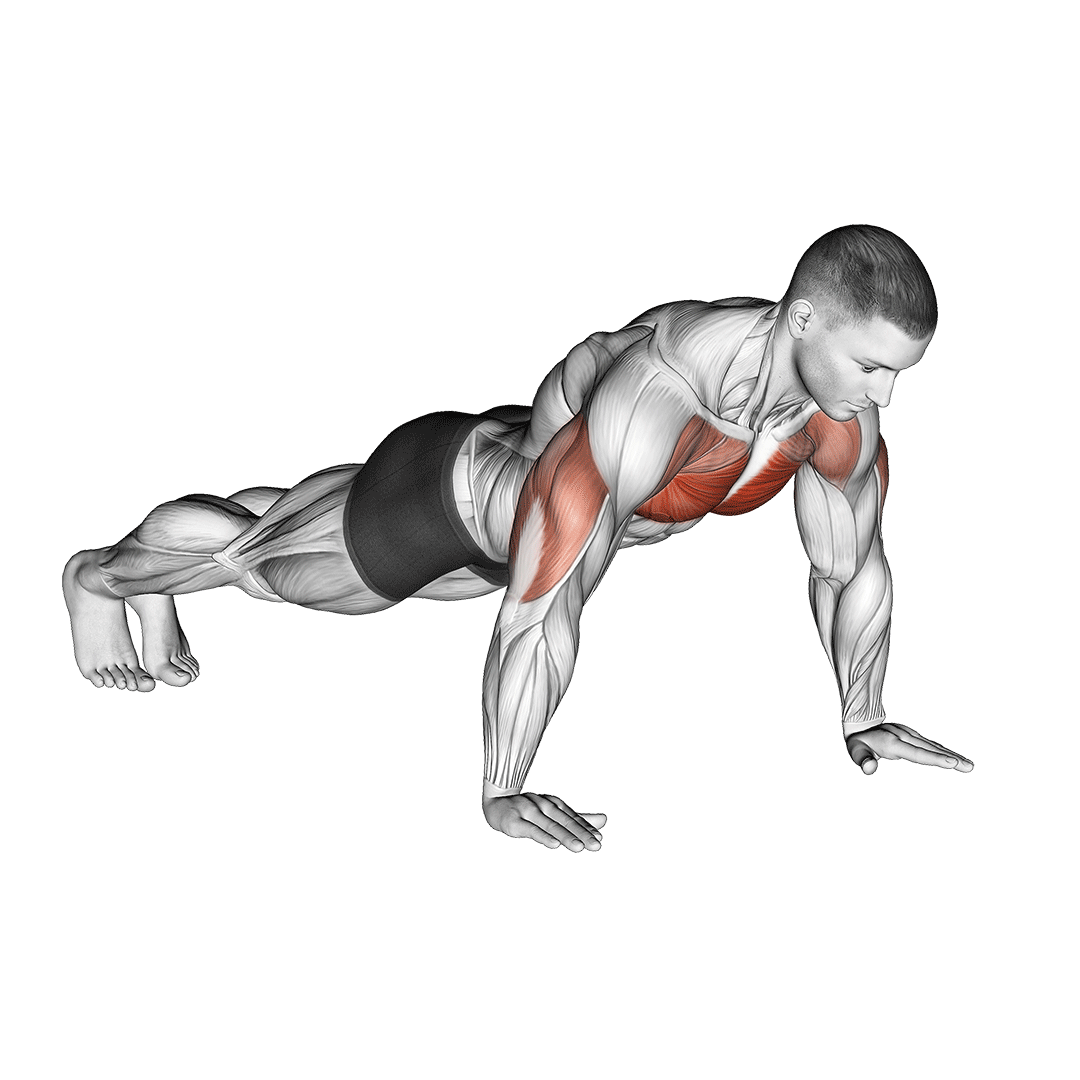
In technical terms, the push-up is classified as a multi-joint compound exercise, often performed in chest-and-tricep workouts at high amounts of volume.
Because of the relative simplicity and ease of the push-up, many advanced calisthenic athletes substitute it with a more difficult or skill-specific variation.
Benefits and Purpose as a Calisthenics Exercise
Push-ups often serve alongside dips as the main compound exercise in upper body workout sessions.
They are best known for being excellent at building up upper body power and endurance, especially in the chest and triceps.
Muscles Worked by Push-ups
Push-ups train the muscles of the triceps brachii, the pectoral muscles, and the deltoids.
Variations
There are far too many push-up variations to comprehensively list in a single article, but among the most common are; knee-ups, clapping push-ups, archer push-ups as well as decline and incline push-ups.
Each push-up variation serves a specific purpose (such as knee-ups as an easier substitution), and are often used as a replacement to the conventional push-up.
How-to:
To perform a repetition of the push-up, the exerciser will lie in a plank position with their palms flat on the ground, slightly wider than shoulder-width apart.
Ensuring that the torso is relatively straight, the exerciser will bend at the elbows and slowly lower their chest to the ground.
Once sufficiently low enough, they will push through the palms and extend the elbows once more - completing the repetition once the torso is at its original elevation.
3. Parallel Dips and Bench Dips
While confusingly referred to as just “dips”, there are in fact two different types of dips that calisthenic workouts make use of.
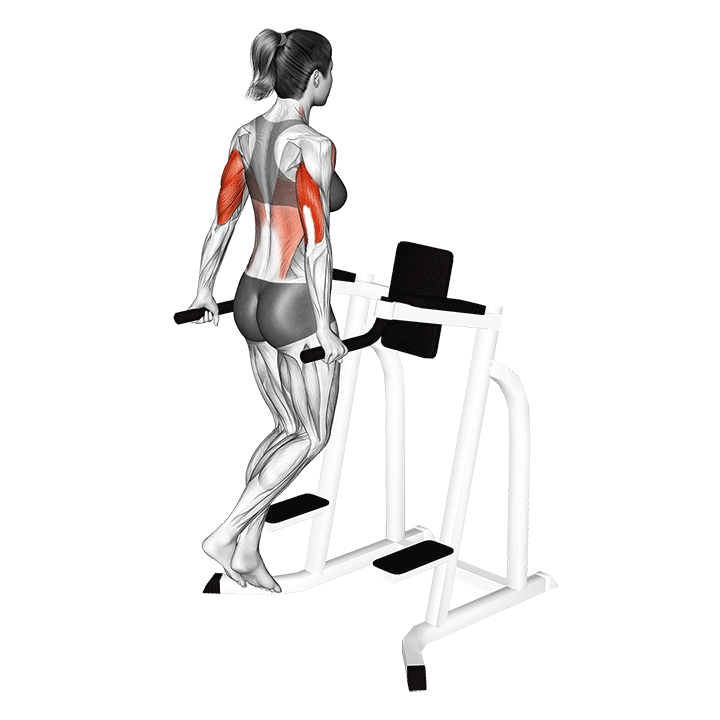
The first and more common is the “tricep” or bench dip, and may be performed with a chair or exercise bench - whereas the second is known as the “chest” or parallel bar dip, and is the iconic dip exercise preferred by most bodyweight athletes.
Regardless of either type, dips are a multi-joint compound movement performed for a moderate amount of volume, often for the purposes of training the chest and triceps.
Benefits and Purpose as a Calisthenics Exercise
Both kinds of dips are performed as a primary or secondary compound exercise in upper body calisthenic workouts, and are occasionally paired with push-ups to maximize upper body push-muscle development.
Dips are known for being an excellent calisthenic movement for strengthening the chest and triceps, and are often used due to their higher amount of resistance and relatively greater specificity in comparison to other upper body calisthenic exercises.
Muscles Worked by Dips
Parallel dips and bench dips train the muscles of the pectorals, the triceps brachii and the deltoids - although bench dips place greater focus on the triceps, whereas parallel dips emphasize the chest more.
Variations
The majority of dip variations involve the addition of further weight or equipment, and as such may not quite fall within the purview of calisthenics training.
Nonetheless, movements like ring dips and assisted bench dips may be performed as substitutes to either version of the dip exercise.
How-to: Chest Dips
To perform chest or parallel bar dips, the exerciser will suspend themselves over a pair of parallel bars with their torso leaning forwards and the feet set behind the body.
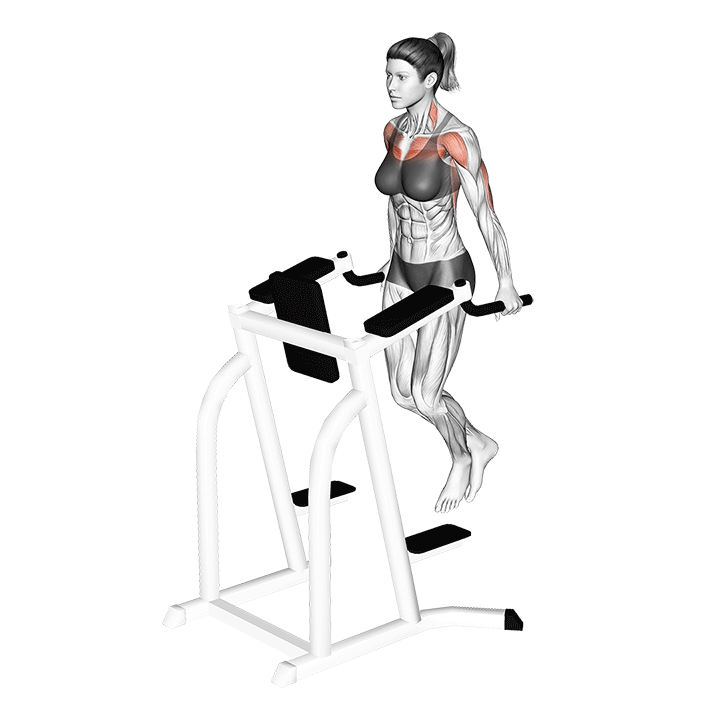
Bending at the elbow, the exerciser will lower their torso downwards until the shoulder is horizontally parallel with the elbows.
From this position, the repetition may be completed once the exerciser has returned to the starting position by pushing through the palms and straightening their arms.
How-to: Tricep Dips
To perform a repetition of the tricep or bench dip, the exerciser will place their palms behind them atop a bench, legs fully extended and the torso suspended in the air.
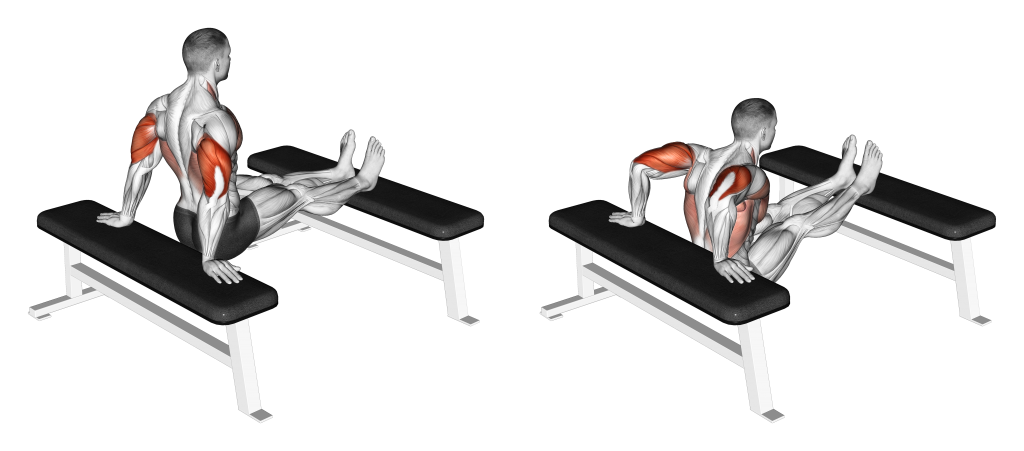
Bending at the elbow, the exerciser will then lower their body until the shoulders are nearly parallel with the elbows, ensuring that the legs remain straight throughout the movement.
To complete the repetition, they will push through the palms of their hands and extend the elbows once more, returning to the starting position.
4. Inverted Rows
An alternative to the pull-up; inverted rows are meant to be an equipment-free variation of the free weight barbell row, featuring a similar muscular recruitment pattern and set of mechanics.
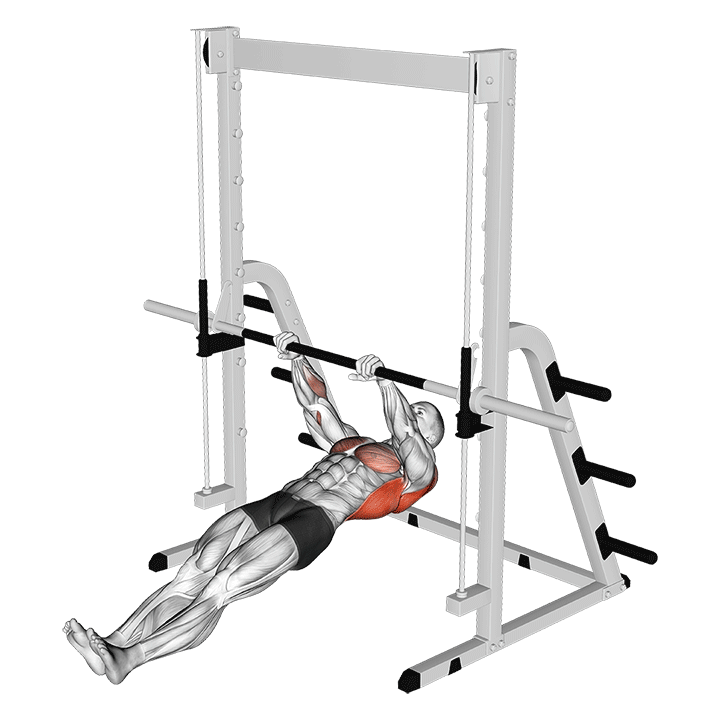
Inverted rows train the back and biceps in a multi-joint compound fashion, and are most effective when performed for a moderate amount of volume per set.
Benefits and Purpose as a Calisthenics Exercise
Inverted rows may be used as either a primary or secondary compound exercise in bodyweight pull workouts.
In terms of benefits, inverted rows provide a perfect substitute to pull-ups in situations where an overhead bar or vertical pulling motion is not possible.
In addition, inverted rows also train the chest alongside the muscles of the back - making them excellent for calisthenic athletes with little time for training.
Muscles Worked by Inverted Rows
Inverted rows are unique among calisthenic exercises, training not only the latissimus dorsi, teres major, brachialis, trapezius and biceps brachii - but also the pectoral muscles alongside the deltoids.
Variations
Variations of the inverted row primarily involve changing the angle of resistance, such as in the case with decline inverted rows or upright TRX rows.
Calisthenic athletes may also shift the emphasis of the exercise by changing the grip they are using - neutral grip inverted rows work the brachialis more, whereas underhand grip inverted rows focus on the biceps.
How-to:
To perform a repetition of the inverted row, the exerciser will suspend themselves from a bar with their legs extended across the floor. The bar should be elevated high enough that the exerciser’s back does not touch the floor, even with the arms fully stretched out.
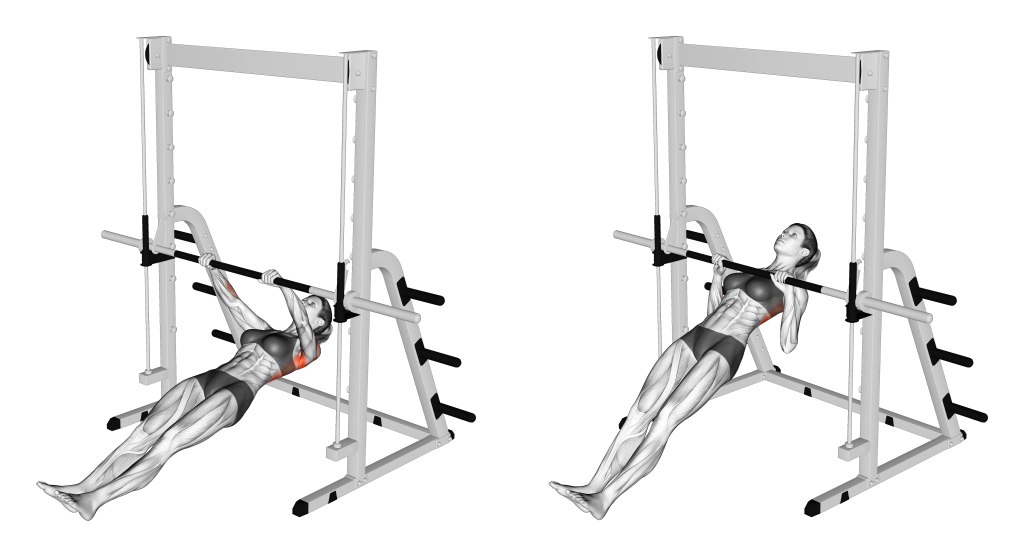
Then, bending at the elbows and contracting the core, the exerciser will draw their chest towards the bar. Once the torso is sufficiently close, the exerciser will reverse the motion in a slow and controlled manner - thereby completing the repetition.
5. Bodyweight Squats
The baseline calisthenic lower body exercise is simply the squat - a multi-joint compound exercise that targets the entirety of the lower body in a single natural movement.
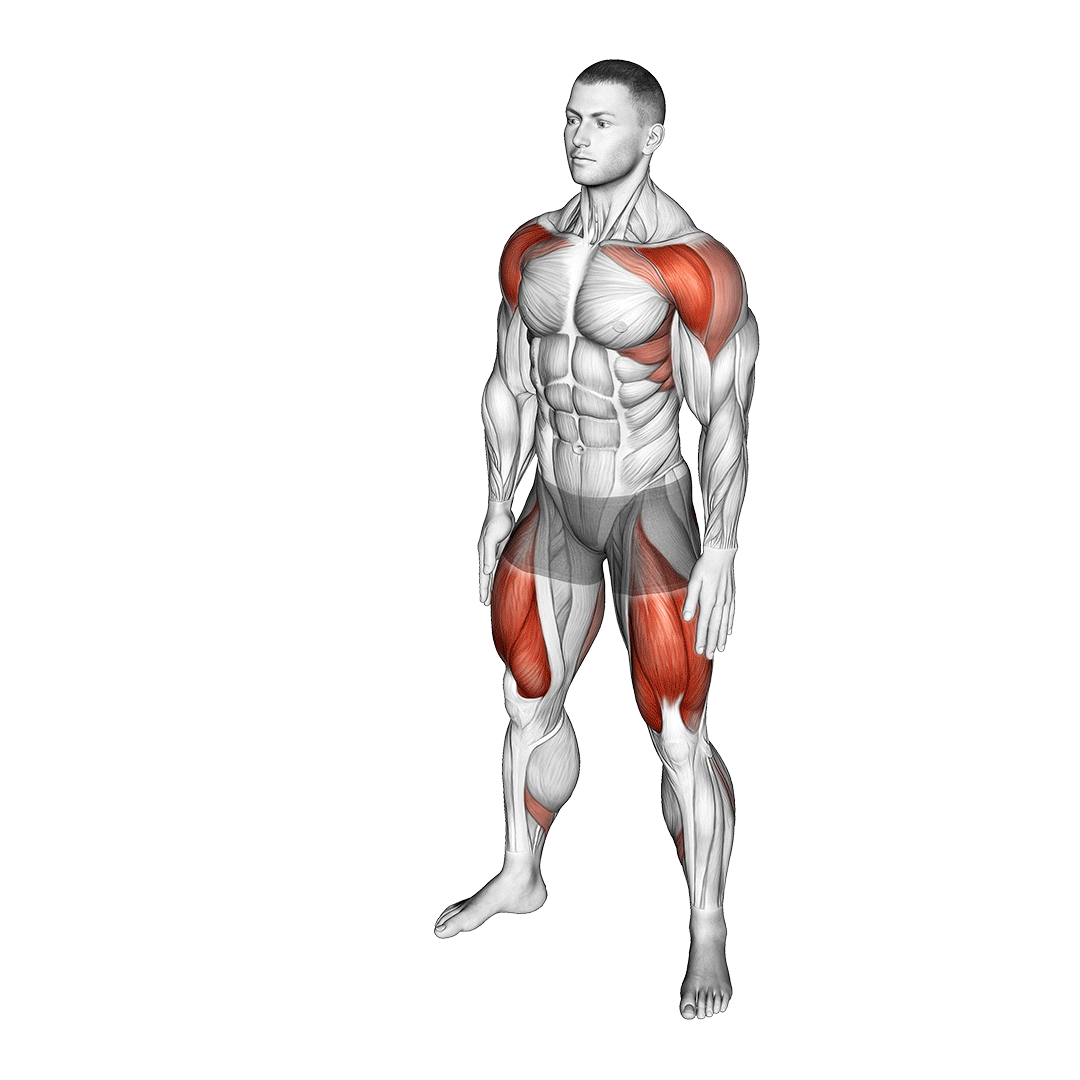
While many intermediate and advanced calisthenic athletes find the bodyweight squat to be inefficient or too easy for their needs, novices are advised to begin with it before progressing to other calisthenic leg exercises like the pistol squat or the lunge.
Benefits and Purpose as a Calisthenics Exercise
Squats are used as the primary compound exercise in bodyweight leg workouts, and are excellent for inducing both strength and mass growth in the muscles of the lower body.
Muscles Worked by Bodyweight Squats
Bodyweight squats target the quadriceps, glutes and hamstrings to great effect.
Variations
The majority of bodyweight squat progressions are performed to make the exercise more difficult, or to increase specificity in some way. Common squat variations include the bodyweight split squat, the pistol squat and the jump squat.
How-to:
To perform a bodyweight squat, the exerciser will stand upright with their feet set hip-width apart. The core should remain contracted and the spine neutral throughout the movement.
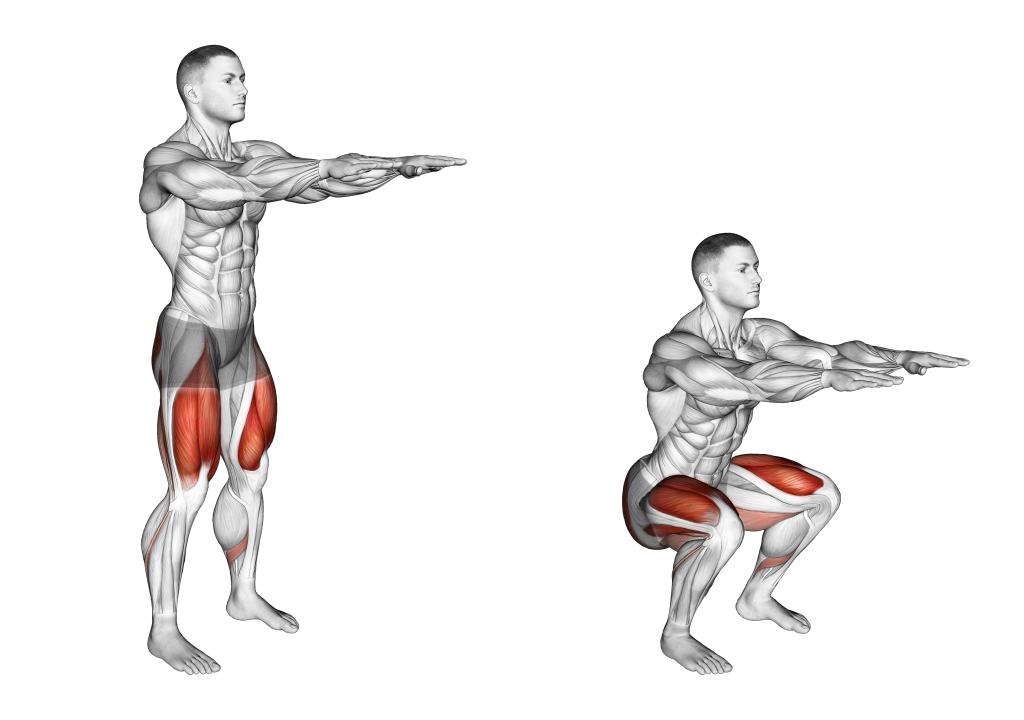
Bending at the knees, the exerciser will push their hips backwards as they lower themselves to at least parallel depth. From this position, they will then extend the knees and push through the feet.
The repetition is complete once they have returned to the original standing stance.
6. Planks
For strengthening the core musculature, few exercises are as simplistic yet effective as planks.
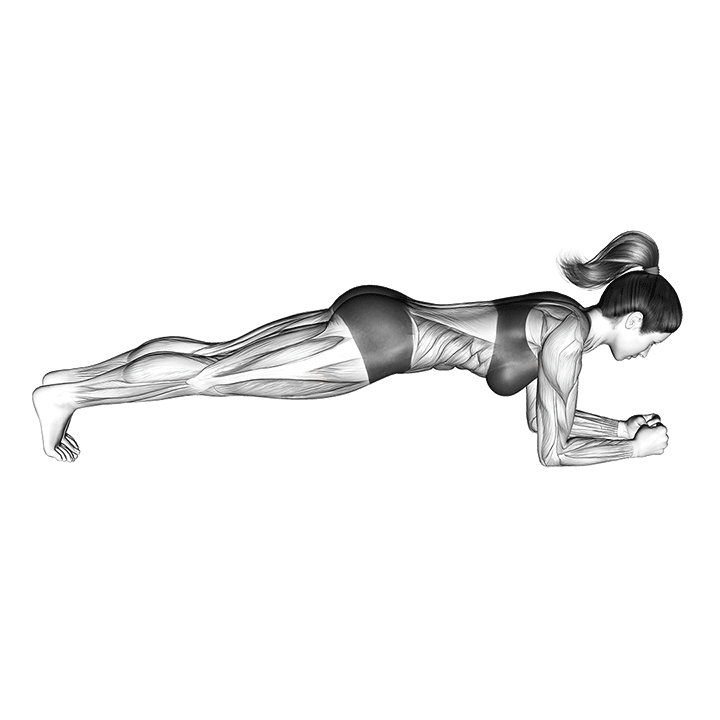
Planks are an isolated isometric exercise performed by calisthenic athletes near the end of a workout session, and are often paired with other isolation exercises so as to create a more comprehensive training program.
Benefits and Purpose as a Calisthenics Exercise
Planks serve as an accessory exercise in many calisthenic workouts, and are known for being a highly effective tool for building a stronger and more stable core.
Muscles Worked by Planks
Planks train the abdominal muscles alongside the obliques and those of the lower back.
Variations
Plank variations primarily involve making the exercise more difficult, and will often require additional equipment. Bosu ball planks and side planks are a few examples.
How-to:
Lying on all fours with the legs fully extended, glutes squeezed and the abs tightly contracted, the exerciser will remain in this position until a predetermined length of time has passed.
7. Crunches and Sit-Ups
As an alternative to the isometric contraction derived from planks, calisthenic athletes may also perform crunches or sit-ups instead.
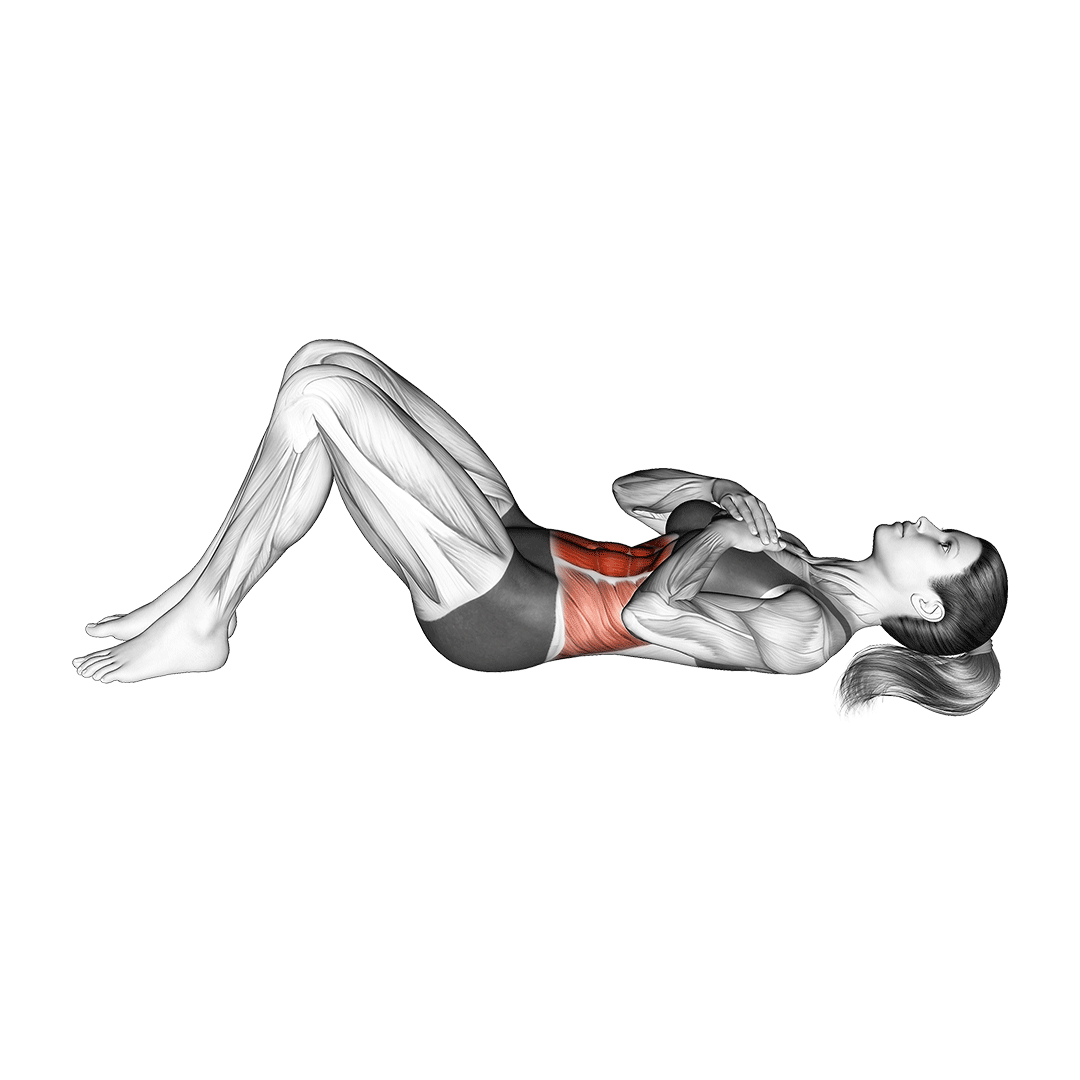
Crunches and sit-ups are both single-joint isolation exercises that feature dynamic contraction of the abdominal muscles, and are often performed for high volume with each set.
Benefits and Purpose as a Calisthenics Exercise
Crunches and sit-ups are both used as accessory exercises near the end of calisthenic workouts, and are favored for their effectiveness at working the core in a dynamic and intense manner.
Muscles Worked by Crunches and Sit-ups
Crunches and sit-ups solely train the muscles of the core, with a particular focus on the abdominal muscles.
Variations
In truth, the crunch itself is simply a safer variation of the sit-up.
However, there are a number of further variations like the decline crunch and the bicycle crunch - all of which improve intensity or specificity in the workout.
How-to: Sit-Ups
To perform a repetition of the sit-up, the exerciser will lie flat on their back with the knees bent and the hands supporting the skull from behind.
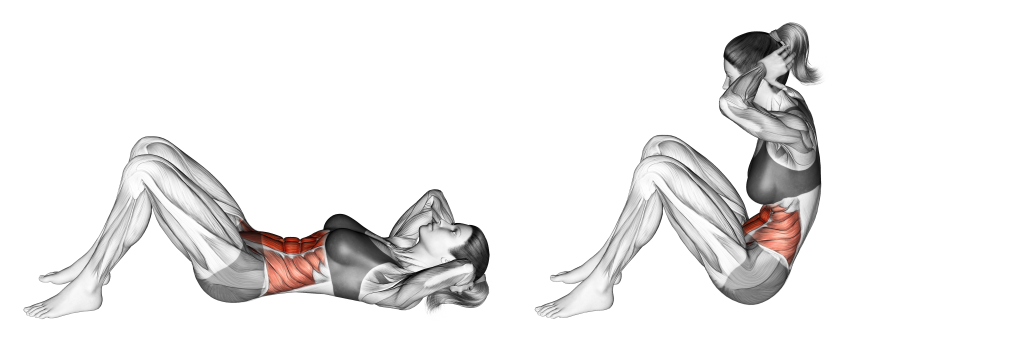
Then, contracting the core, the exerciser will pull their torso upwards until it is parallel with the legs. The repetition is complete once the torso has returned to its original lying position on the floor.
How-to: Crunches
To perform a repetition of the crunch, the exerciser will lie face-up on the floor with the feet planted and the legs bent.
Squeezing the ab muscles, the exerciser will then raise their torso slightly upwards, ensuring that part of the lower back remains in-contact with the floor. Once the abs are fully contracted, the repetition is complete.
In Conclusion
Though some of the most common calisthenics exercises have been listed out in this article, keep in mind that there is no end to the number of possible bodyweight movements you can perform - not to mention the possible progressions.
Regardless of what exercise is being done or for what purpose, it is important to ensure that proper form is followed at all times. If you are unsure of a certain aspect of your training, it is a good idea to seek out professional coaching advice.
References
1. Pure Calisthenics. (Nov 8 2016) “Calisthenics for Beginners: 50 Bodyweight Exercises The #1 Bodyweight Training Starter Guide” CreateSpace Independent Publishing Platform, The SUPERHUMAN Series. ISBN : 1539045803, 9781539045809

